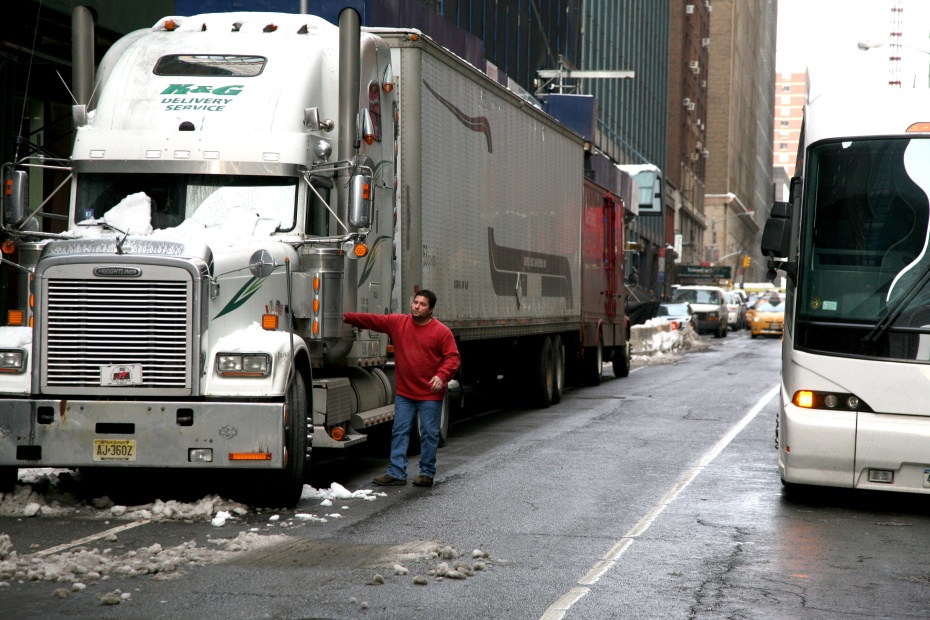摘要: 區塊鏈領域已經是創投公司的新寵兒,今年第三季獲得融資創下歷史新高之餘,2021年迄今的融資總額,更是超越去年全年的3倍以上。

▲圖片標題(來源: Vincent Desjardins)
During a keynote address at its fall 2021 GPU Technology Conference (GTC), Nvidia debuted ReOpt, a software package that combines local search heuristics algorithms and “metaheuristics” to optimize vehicle route planning and distribution. According to the company, ReOpt can improve route planning, warehouse picking, fleet management, and more in logistics to control delivery costs from factories to stores and homes.
Companies are increasingly facing supply chain challenges caused — or exacerbated — by the pandemic. A U.S. Census Bureau survey f0und that 38.8% of U.S. small businesses were experiencing domestic supplier delays by the middle of July 2021. Late deliveries can seriously impact customer loyalty, with one survey finding that 80% of shoppers would cut ties with brands if they experienced stock shortages.
“At a time when the global supply chain faces massive disruption, ReOpt provides the AI software required for everything from vehicle routing for last-mile delivery to efficiently picking and packing of warehoused goods bound for homes and offices,” Nvidia software engineering manager Alex Fender said in a blog post. “ReOpt delivers new tools for dynamic logistics and supply chain management to a wide range of industries, including transportation, warehousing, manufacturing, retail, and quick-service restaurants.”
AI-powered logistics
Delivering goods directly to a customer’s door, called last-mile delivery, was costly even before the pandemic disrupted the global supply chain network. Over half of all air, express, rail, maritime, and truck transport shipping costs result from last-mile deliveries, impacting profitability, according to ABI Research. Onfleet estimates that companies typically eat about 25% of that cost themselves — a number that continues to increase as bottlenecks worsen.
ReOpt, which is now available in early access, taps algorithms to provide customers with road condition, traffic, and route metrics to reduce miles, fuel cost, carbon emissions, and idle time. The service models the movements of vehicles that have finite capacities and different costs, factoring in items like fresh produce that must be carried by refrigerated trucks. ReOpt also allows customers to create automated routines that dynamically route robots for truck loading as new orders arrive. And it can take into account the number of pilots, drivers, and workers available to operate vehicles on a given day, folding in maintenance costs.
“GPUs offer the computational power needed to fuel the most ambitious heuristics while supporting the most challenging constraints. ReOpt takes advantage of Nvidia’s massively parallel architecture to generate thousands of solution candidates and refine them to select only the best one at the end,” Fender continued. “As a result, ReOpt can scale to the largest problems in seconds with world-class accuracy.”
A growing number of companies are developing AI services to optimize components of the supply chain. DispatchTrack provides AI-powered route optimization, reservations, billing and settlement, and omnichannel order tracking tools. Locus is also developing a platform for logistics and “enterprise-scale” supply chain automation. Others in the global logistics market — which is expected to be grow to $12.68 billion in value by 2023, according to Research and Markets — are Convoy, Optimal Dynamics, KeepTruckin, and Next Trucking, which have collectively raised hundreds of millions in venture capital.
Tech giants have entered the fray, too — most recently Microsoft with its Supply Chain Insights product. Uber’s eponymous Uber Freight connects carriers and drivers with companies that need to move cargo. As for Google’s Supply Chain Twin, which became generally available in September, it organizes data in Google Cloud to expose a more complete view of suppliers, inventories, and events like weather.
While only 12% of manufacturing and transportation organizations are currently using AI in their supply chain operations, 60% expect to be doing so within the next four years, according to MHI. This dovetails with a recent PwC report, which found that 48% of companies are ramping up investments for simulation modeling and supply chain resilience.
轉貼自: VentureBeat
若喜歡本文,請關注我們的臉書 Please Like our Facebook Page: Big Data In Finance


留下你的回應
以訪客張貼回應